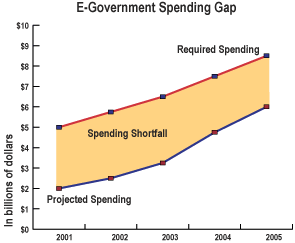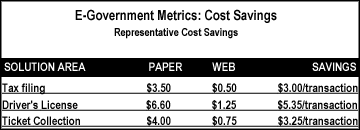ACROSS THE DIGITAL NATION

The federal government exerts a tremendous influence over the business processes, daily operations and technology development within state and local government agencies.
The federal government exerts a tremendous influence over the business processes, daily operations and technology development within state and local government agencies. In many respects, federal government has been the most significant force in spurring state and local agencies to develop new technology solutions for tax, transportation, health and human services functions.In this Internet age, there are new requirements to ensure public-sector agencies can meet the objectives of online government service delivery. To that end, I offer an open letter to President Bush to help guide the new administration on key technology decisions.Dear Mr. President: The era of e-government is upon us. Already a number of public-sector organizations have implemented new e-government solutions to increase customer service, provide self-service government and transform participation with public-sector agencies.Despite the substantial progress under way, there are a number of key issues that need greater attention. Resolving them will help drive e-government development and bring forth the promise of government transformation. Please consider the following.Appoint a federal chief information officer. Executive leadership drives innovative technology development in the public-sector marketplace. Appointing a federal CIO will not only be a strategic focal point but also will galvanize technology support across the myriad defense and civilian agencies. With clear reporting to the president, this technology czar will direct e-government activities, eliminate stovepiped development of computer systems and build a coordinated information technology road map.At a higher level, this cabinet-level CIO will be able to champion e-government transformation, ensure that government IT meets the needs of a digital society and provide direction for Internet policy in areas such as security, privacy and accessibility. The president and CIO should operate in tandem, much like the growing relationships between chief executive officers and CIOs in the private sector.The federal CIO must also be able to work with state and local government agencies on customer-centric services in the public sector. For example, this combined approach may provide businesses that now work with multiple federal, state, county and municipal agencies with a singular portal to file taxes, update licenses, obtain permits, file government documents, etc. Executive leadership across all levels of the public sector may one day make seamless government service delivery a reality.Allocate e-government matching funds. In many respects, e-government is an extension of traditional public-sector service delivery. As a result, there is a significant funding crunch between established technology development and new online activities.Government agencies are projected to spend $2 billion on e-government development in 2001. Since a number of new e-gov solutions over the past 18 months were developed based on a self-funded model, the funding crunch was less pronounced. However, with a number of these models in rapid decline and as the need to scale and integrate online solutions with legacy systems increases, public-sector agencies face an online funding crisis. Public-sector spending falls significantly short of the $5 billion needed to address the true cost of e-government implementation. (See top chart.) By allocating e-gov matching funds, the federal government will provide incentives for continued development of online technology and help alleviate the estimated $3 billion shortfall. Please note that these funds must be flexible, enabling states to create innovation funds that spur cross-agency or intra and intergovernment online development.The return on e-government solutions justifies the expenditure. For services such as tax filing or driver's license renewal, online solutions can save public-sector agencies $3 to $5 per transaction. (See second chart.) Although e-gov solutions will reduce the cost of government service delivery, public-sector agencies must drive transaction volumes and redeploy personnel to reap these savings. Most importantly, however, e-gov solutions significantly increase customer satisfaction with government service delivery.Bridge the digital divide. The future of the country is tied to information technology and the knowledge economy. The federal government must work to bridge the gap between those areas that have sizable access to Internet-related technologies and those that do not. In many respects, the E-rate program provided an initial impetus to ensure the nation's school system participated in improving access and developing technology skills. A recent survey by the Education Department revealed 98 percent of public schools had Internet access in 2000, up from a mere 34 percent in 1994. (See third chart.)Some states have made significant inroads by establishing Internet accessibility centers and developing digital divide policy initiatives. The federal government must continue to play a central role in addressing this issue and bringing private- and public-sector solutions to the forefront.




Rishi Sood is a principal analyst with Gartner Dataquest in Mountain View, Calif. His e-mail address is rishi.sood@gartner.com

Rishi Sood



Rishi Sood is a principal analyst with Gartner Dataquest in Mountain View, Calif. His e-mail address is rishi.sood@gartner.com
NEXT STORY: DynCorp's State and Local Deal Not What It Seems